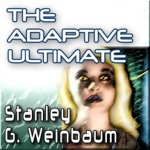
 Tales of Terror Collection
Tales of Terror CollectionA Night in Whitechapel, Was It a Dream?, Caterpillars, John Mortonson’s Funeral
‘Night in Whitechapel’ French short-story master Guy de Maupassant offers this chilling look into one of the world’s best known cities. When two young men make a trek to London on a cold December evening, they expect to take in the city and maybe a pub or two along the way. But a chance encounter with a mysterious woman soon has them questioning not only the proceedings of their evening but their sanity as well. ‘Was It a Dream?’ Guy de Maupassant once again delivers a spine-tingling narrative. A young man recounts the tragic death of his love, claimed by an unknown illness. In his grief, he wanders the cemetery where she is buried to find a dark secret that she, and many other corpses, share. ‘Caterpillars’ Stories of the supernatural from E.F. Benson have been terrifying audiences for decades—even making the transition to television adaptation. In “Caterpillars,” a man recalls his terrifying stay at a haunted Italian villa. You will never look at caterpillars in the same way. ‘John Mortonson’s Funeral’ Perhaps best known for The Devil’s Dictionary, Ambrose Bierce is a mainstay of nineteenth-century American literature. In “John Mortonson’s Funeral,” Bierce adds horror to his satirical lens. The mourners at this funeral will be forever changed.
“Night in Whitechapel” – Guy de Maupassant
When two young men make a trek to London on a cold December evening, they expect to take in the city and maybe a pub or two along the way. But a chance encounter with a mysterious woman soon has them questioning not only the proceedings of their evening but their sanity as well.
“Was It a Dream?” – Guy de Maupassant
A young man recounts the tragic death of his love, claimed by an unknown illness. In his grief, he wanders the cemetery where she is buried to find a dark secret that she, and many other corpses, share.
“Caterpillars” – E.F. Benson
A man recalls his terrifying stay at a haunted Italian villa. You will never look at caterpillars in the same way.
“John Mortonson’s Funeral” – Ambrose Bierce
The mourners at this funeral will be forever changed.This collection is well named. All of these tales have a certain creepiness factor that will leave your skin crawling if you think about them too much. They also have the virtue of not being the usual “classic” horror tales included in most anthologies, although they are by authors acknowledged as master storytellers.
What enhances the subtlety and creeping horror is Victor Garber’s soft spoken narration. As any good actor would, he reads each tale differently to reflect its own character, but never with obvious technique that draws the listener away from the story itself. My favorite was “Was It a Dream?” in which the protagonist’s lovelorn state gradually gives way to shuddering fear in the graveyard. The transition was so seamless that I couldn’t tell you when it happened and by the end of the tale I myself was horror stricken.
The collection is short, clocking in at slightly more than an hour, but it is choice. Definitely recommended.
Posted by Julie D.






